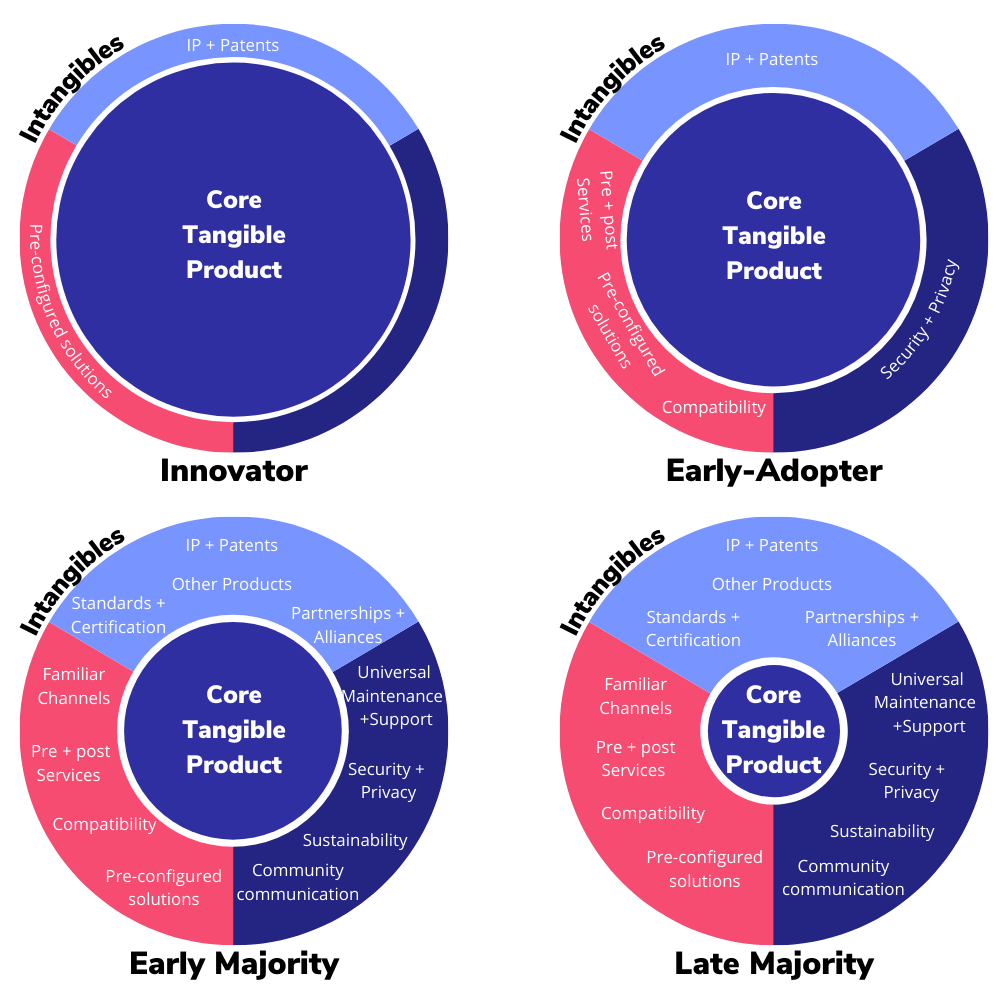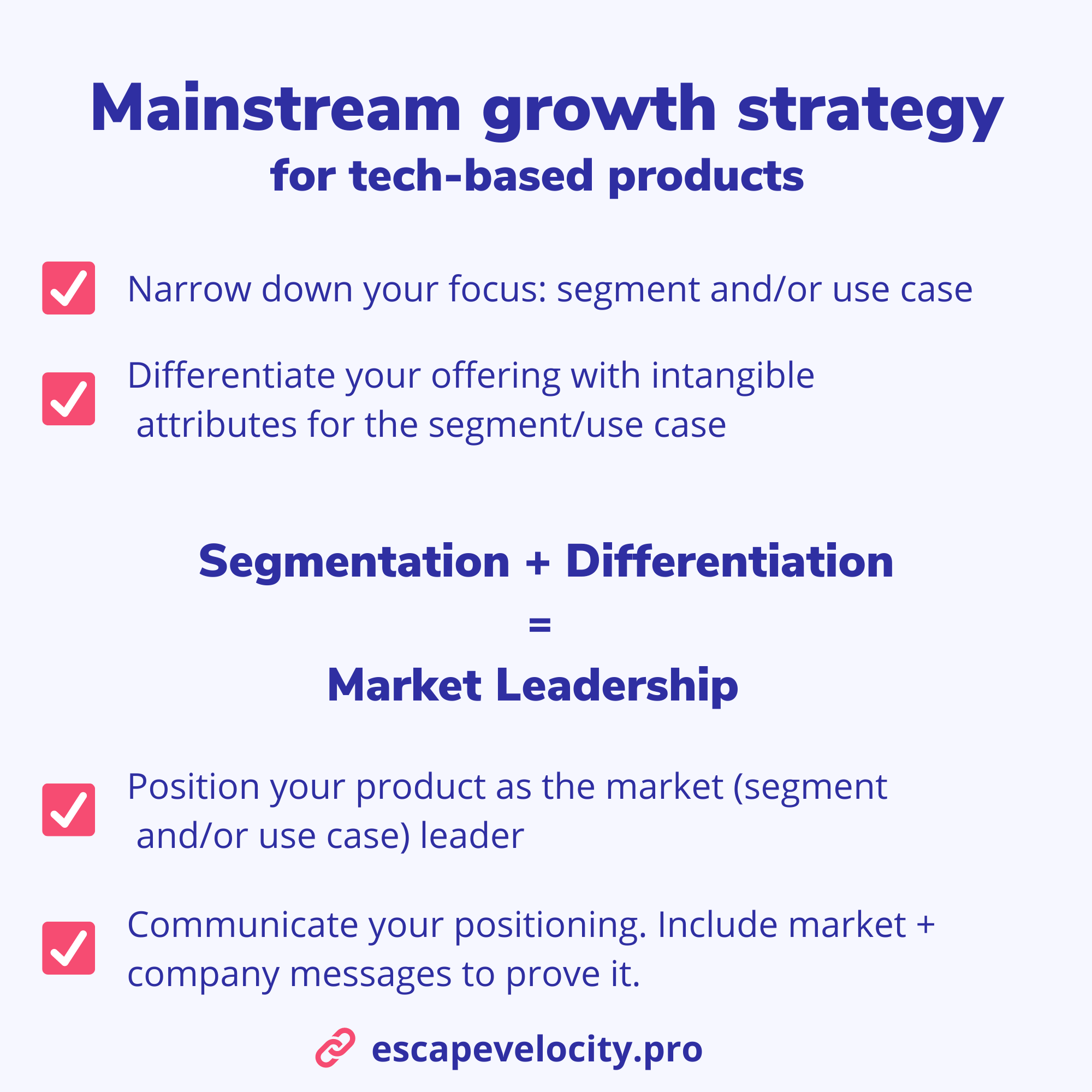Mainstream adopter VS early-adopter differences. The Iphone Story.
Last Saturday, I went with my mom to change her 3-year-old Samsung for an iPhone 12.
I was the one influencing her purchase.
✅ Mainstream needs to validate tech purchases by known local buyers. They don’t like to be the first.
I recommended my mom to go to the Apple Store (specialist)…
…she picked to go to a well-known big retailer (generalist).
✅ Familiar channels are a must when competing in the mainstream.
I asked her why she wanted to go to the big retailer instead of Apple Store.
I observed.
Rather than buying an insolated core product (Iphone), she was buying a whole product that the big retailer was offering:
Flexible and free financial services
Migration from android to IOS
Free insurance packs
Transactional & generalist conversation
The Iphone
She decided on safety and low risk over product specialization (Apple Store).
✅ Build differentiation and reduce risk perception with a whole product to jump into the mainstream and achieve exponential growth.
What intangibles are you building to differentiate your offering?
How are you adapting your GoToMarket to reach + sell to the next wave of adopters?
✅ Your tech-business + product should be dynamic and be adapted to the technology adoption lifecycle stage of your market-cagegory to achieve sustainable growth.
This is a consumer story, but it works the same way to for tech products/services in B2B.
Don’t miss this light and friendly presentation with more information about the frameworks and key takeaways (no email needed)
🔥 Get my 6-lessons FREE video course on Product Marketing Strategy to grow your SaaS/tech product here breakthroughgrowth.co
And if you need help to accelerate your product’s market acceptance and revenue, let’s talk at Predictable Innovation


